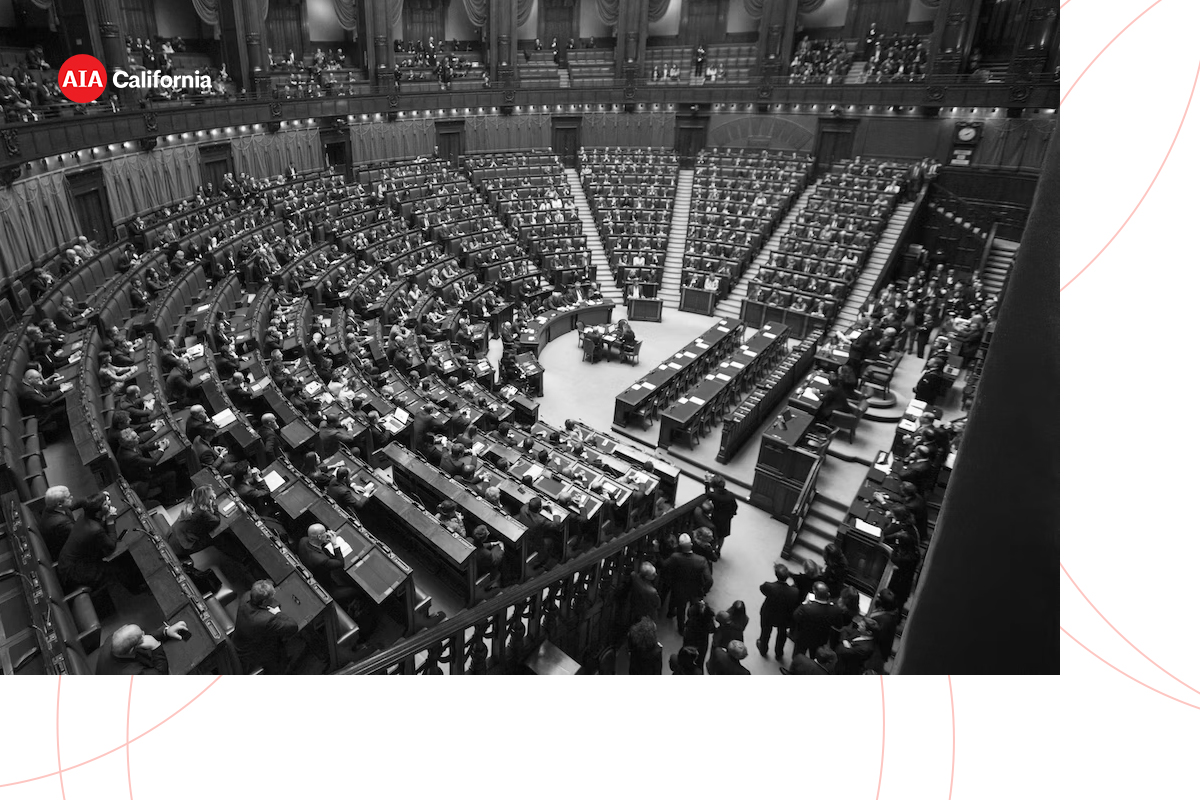
(December 15, 2022) Did you know that AIA California (AIA CA) regularly advocates for our members before a variety of regulatory bodies in California that impact the profession? The primary one of which is the California Architects Board.
Recently, AIA CA was successful in stopping an onerous proposed regulation that would have had many unintended consequences for licensed architects. At the December 9th CAB meeting, by a vote of six in favor, one opposed, and two abstentions, the Board voted to table the proposed regulations. That proposed regulation was California Code of Regulation (CCR) 135, which in its most recent version proposed to require ”(a) As of July 1, 2023, an architect … include their name and license number in all forms of advertisement to the public in connection with an offer to provide architectural services for which a license is required by the Architects Practice Act, which shall include any writing, electronic device, card, letterhead, Internet Web site, social media profile, or contract proposal.”
While AIA CA fully supports the primary purpose of CCR 135, to protect the public, the way this proposed regulation was written was of great concern to our membership for a number of reasons:
Focuses on Unlicensed Individuals: We believe exploring steps to stop the illegal advertising of architectural services by unlicensed individuals should remain the focus of the CAB in protecting consumers from services being offered illegally by unlicensed individuals. CCR 135 attempts to protect consumers from unlicensed individuals by solely placing a new requirement on licensed architects, subject to disciplinary action and fines for failure to follow the proposed advertising regulation.
Lacks Clarity: Licensed architects would be expected to fully comply with the proposed advertising regulation or be subject to disciplinary action and fines. Some forms of advertising clearly fall within the scope of CCR 135, such as business cards and letterhead; each of these would have to include the name of a licensed architect and a license number. However, there is a lack of clarity of how to applies to other forms of “advertisement.” For example, would all emails from an architect’s work email have to include the architect’s license number, or all social media posts about a project have to include a license number?
Could Encourage the Illegal Use of a License Number: As we have seen with general contractors, those who illegally offer and provide contractor services routinely use false contractor license numbers, either a number that is randomly generated or one that is stolen from a licensed contractor. Furthermore, by the widespread advertising of license numbers on electronic and printed material, we are concerned CCR 135 will result in the same with the illegal offering of architectural services.
AIA CA was actively involved throughout the process of this proposed regulation. We submitted letters stating our member’s concerns, spoke with staff and Board members, and testified at hearings. While the proposed regulation was defeated for now, there was talk about how to address the issue of nefarious actors advertising themselves as architects moving forward. AIA CA made it known that we stand ready to be a part of the conversation to find a solution that actually addresses that issue without punishing well intentioned licensed architects.
Special thanks to AIA CA members Janis Kent FAIA, Paul Menard, AIA, and Laura Knauss, AIA for taking time out of their busy schedules to testify throughout the process about the real world impacts this proposed regulation would have on the profession.